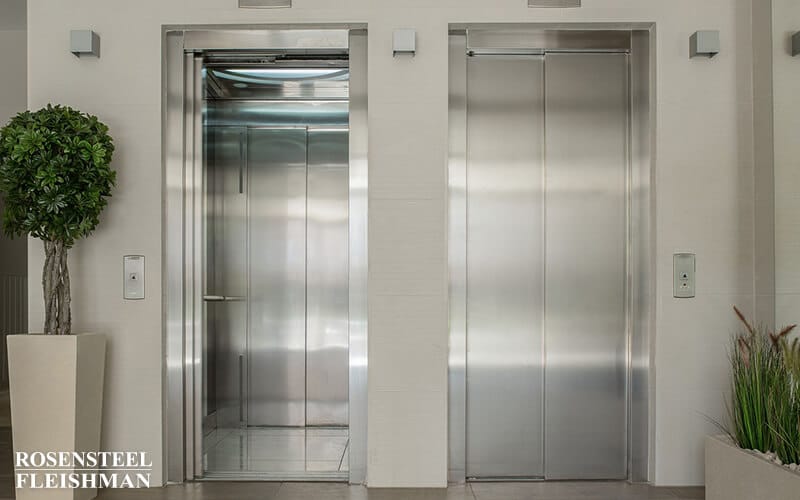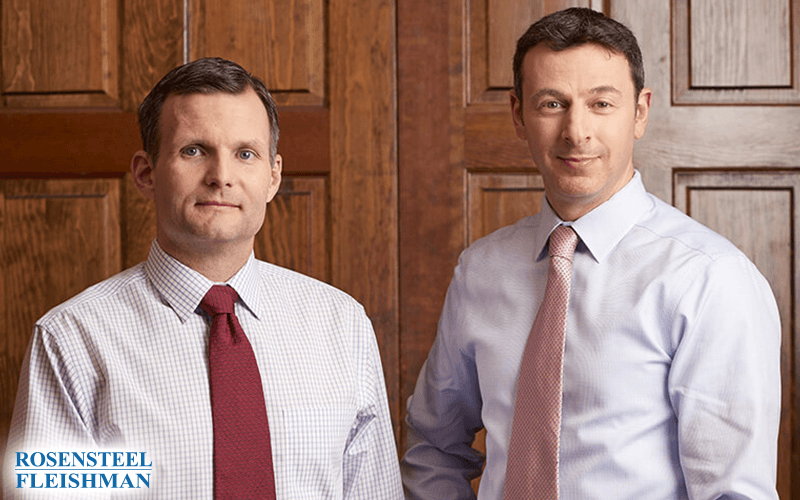Being involved in a car accident can shake up your entire day, if not your entire month. Whether it’s a minor fender bender or something more serious, dealing with the aftermath often feels like stepping into a world full of confusion. One minute you're heading to work, the next you're standing beside a damaged car, […]

Elevator Negligence
Elevators are one of the greatest inventions of the 19th century. They allowed architects to build up thereby creating skyscrapers and minimizing urban sprawl. They allowed those in our society with mobility issues or the infirm to access areas otherwise inaccessible. However, there is another aspect of elevators, that while on average, doesn’t affect the majority of users can result in injury or death. Elevators, like other machines, malfunction. Unfortunately, when elevators malfunction it can result in catastrophic or even fatal injuries.
In North Carolina, the N.C. Department of Labor oversees and conducts inspections on elevators. Their mandate is to ensure proper installation and safe operation of elevators that operate in public establishments and private places of employment. Every time you walk into an elevator in NC you should see that the elevator has passed inspection by the NCDOL.
The NCDOL has the authority of statute as well as administrative rule making to oversee the installation and use of elevators. The law controlling elevators can be found looking at the Elevator Safety Act, North Carolina General Statute 95-110, herein the “Act”. Within the Act are set forth numerous rules and penalties for violating said rules. Violations of the rules are both civil and criminal. The scope of this article will look at civil violations only.
When bringing a claim for negligence it is necessary to look at possible failure points on the elevator. There are numerous failure points in an elevator. These include, but are not limited to, the doors, motor, or cable. In buildings over 3 stories, an electric motor usually raises or lowers an elevator via a cable. The cars of the elevator travel up and down in the elevator shaft. Issues arise if the elevator car moves too far sideways in the shaft. Also, it should stop without jarring its passengers and at the appropriate height within the shaft.
Elevators have usually one or two doors. One door elevators open up directly into and out of the elevator. Two door elevators have one door for the elevator and one door for the floor. These doors must be coordinated so as to open and close at the same time.
Failures can occur at any point in the elevator. If a failure occurs in the motor the car will not go up or down. This creates a problem if you are in the car when the elevator motor stops working. In some elevators, if it has detected a malfunction in the motor the car returns to the ground floor to discharge its passengers (usually relying on gravity to pull the car down). In other cars it stops. At that point other safety gear is supposed to lock the car in place. Other issues with the motor can result in the jarring of the elevator. If the motor start or stops suddenly it can result in a fall.
Issues with elevators can also occur if there is a power failure or spike. In some cases the plaintiff needs to examine the interplay between the electrical system and the elevator system (motor, backup generator, etc). We have all heard of cases of people being stuck in elevators for hours, or in some cases, days. Recently, a woman was found severely dehydrated, after she was stuck in her employers elevator for the weekend. While some elevators have phones built in most cell phones unfortunately, don’t work well enough to place or receive calls from inside the elevator car.
Failures with the elevator doors can result in catastrophic injuries, many times to the shoulders, back, head or hands. Most people assume that if the elevator detects the presence of something blocking the doors from closing that the doors should open up. However, when a malfunction occurs the doors will continue to close resulting in a crush injury. In some situations, you can have a combination of errors where the elevator stops at the wrong point in the shaft and the doors open up resulting in injury if the person attempts to step out. In other situations, the outer doors can open to the shaft without the elevator being present and people can fall into the shaft.
Finally, a cable failure can result in the falling of the elevator car. There are numerous failsafe devices to prevent this type of incident including locking devices which are designed to prevent the car from falling.
Under the Act the owner/operator of the elevator is required to report the occurrence within 24 hours to the NCDOL. An occurrence is defined in the statute as death or injury requiring medical treatment, other than first aid, by a physician. First aid means the one time treatment or observation of scratches, cuts not requiring stitches, burns, splinters and contusions or a diagnostic procedure, including examination and x-rays, which does not ordinarily require medical treatment even though provided by a physician or other licensed personnel. In some situations we have been able to show the prior occurrences were not reported. The reporting provision forces the owner/operator to take the appropriate steps to rectify the problem.
The Act prohibits the use of unsafe equipment. Section 95-110.8 Operation of unsafe device or equipment. No person shall operate, permit to be operated or use any device or equipment subject to the provisions of this Article if such person knows or reasonably should know that such operation or use will expose the public to an unsafe condition which is likely to result in personal injury or property damage. Clearly, if the owner/operator is not reporting incidents to the NCDOL it raises the question of whether the elevator is safe. Regardless, the prohibition of unsafe elevator use places the burden on the owner/operator to ensure proactively that the elevator is safe. This requires regular maintenance of the elevator. Further, the maintenance must be provable, through written records.
North Carolina elevator negligence cases have an added layer, contributory negligence. If the Plaintiff is on notice that there is a problem with the elevator but continues to use it, the defense will argue the Plaintiff has in effect, assumed the risk and contributed to their injury. Contributory negligence is a complete bar to recovery.
If you or a loved one has been injured in an elevator accident please don’t hesitate to contact us at (704) 714-1450. You will speak directly with an attorney who can answer all of your questions. There is no fee for an initial consultation.
Additional Personal Injury Articles
When you’ve been hurt in a serious accident, it’s easy to feel overwhelmed. The ambulance ride, the emergency room, the follow-up appointments—it all happens so fast. Once the immediate medical issues are handled, though, another layer of stress begins to build: bills, missed work, insurance adjusters, and a growing list of unanswered questions. During this […]
Motorcycle accidents can leave behind far more than damaged bikes and bruises. They often bring a wave of confusion, pain, and unanswered questions. If you’re like many people after an accident, you may be wondering what your rights are, what steps to take, and how to even begin dealing with insurance companies and medical bills. […]
Accidents involving large trucks often leave people feeling overwhelmed. The sheer size and weight of these vehicles mean that even a minor collision can result in major injuries, costly vehicle damage, and weeks or even months of recovery time. For many drivers, the days following an accident can feel chaotic. Between medical appointments, missed work, […]
